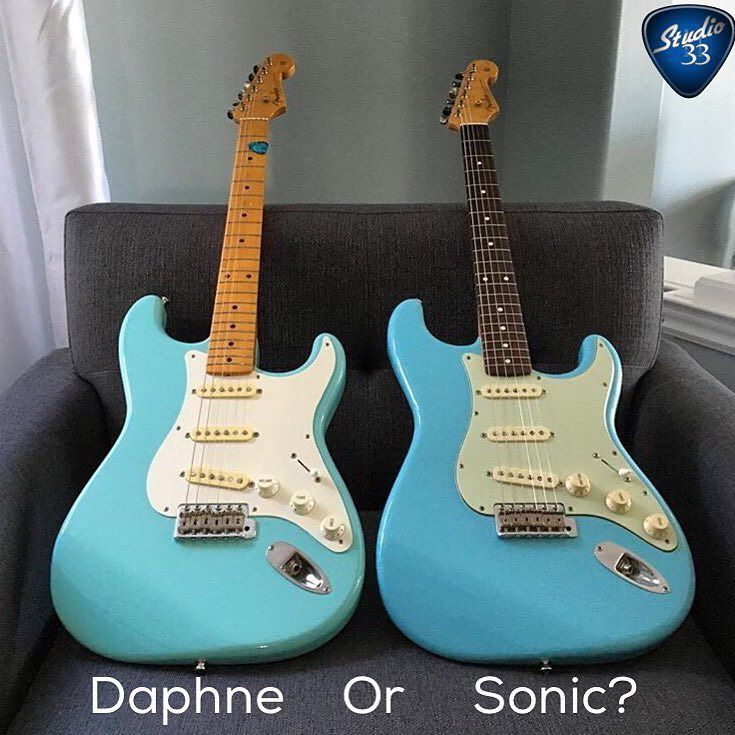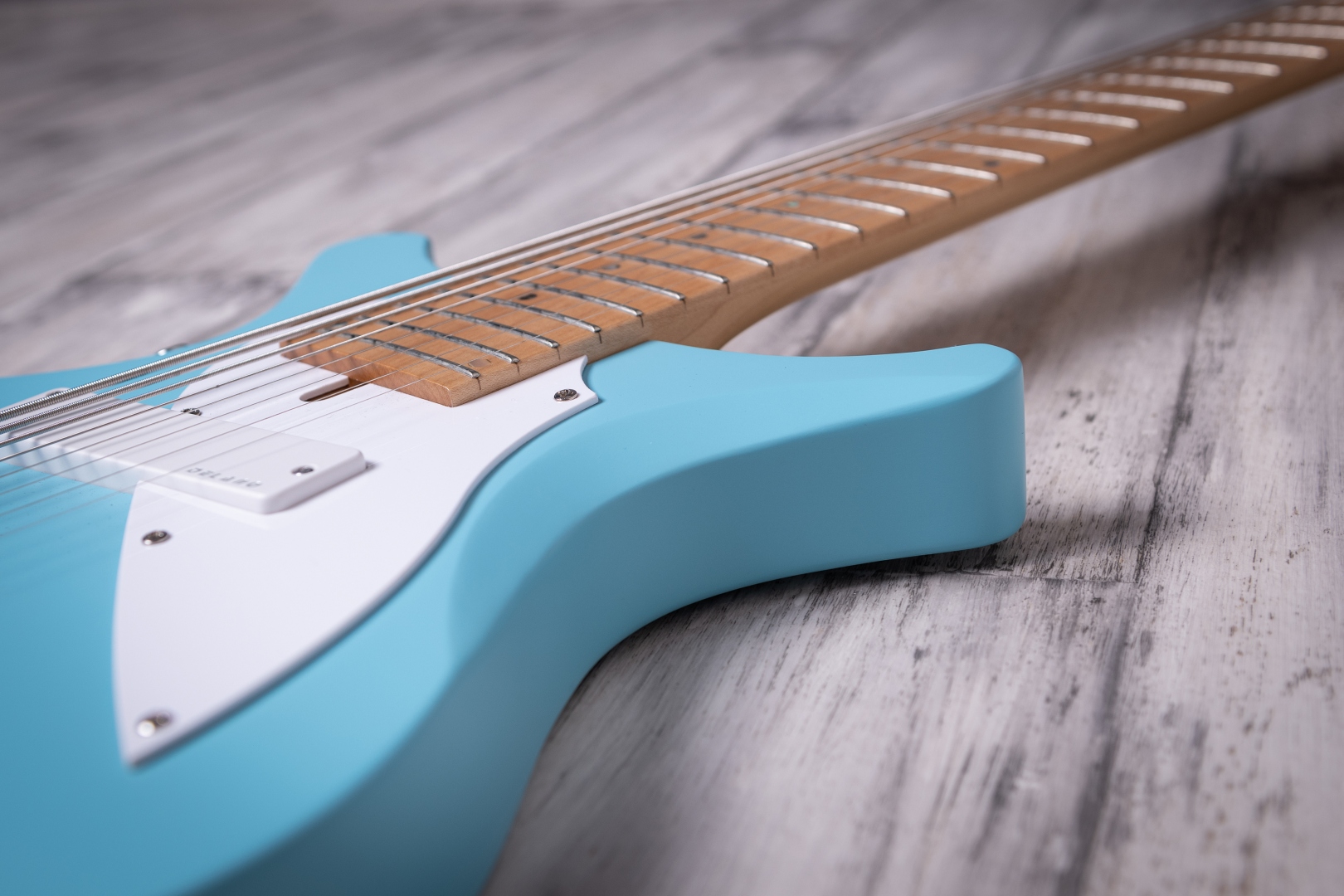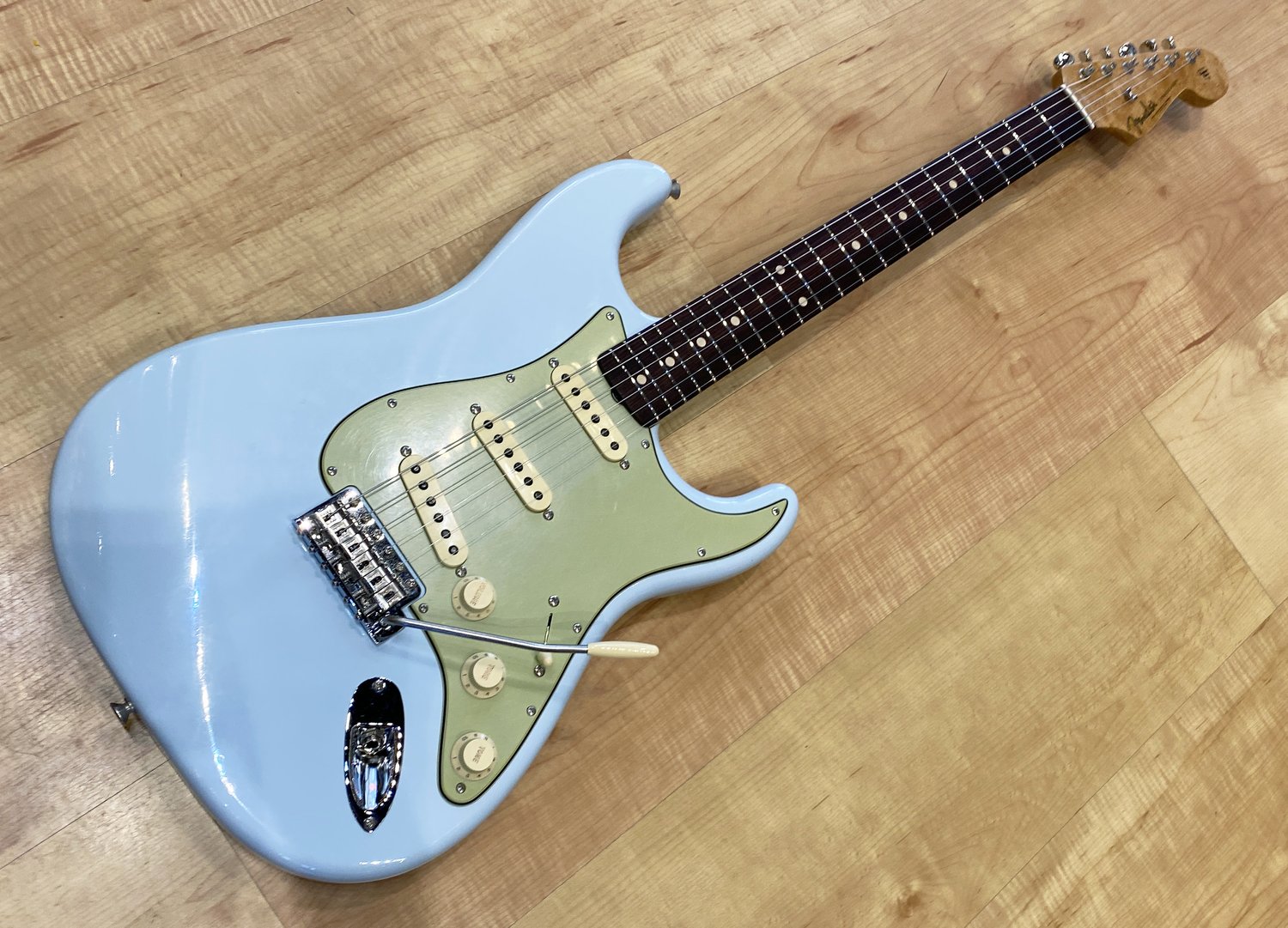Contents
Despite not being the decisive factor in the grand scheme of things, color still means a lot in instruments and your guitar is no exception. While Fender guitars feature quite a few colors nowadays, Daphne Blue and Sonic Blue stand out in terms of popularity. At a glance, both colors resemble each other here and there but a number of differences still exist. If you like to hear professional opinions regarding Daphne Blue vs. Sonic Blue, you should find my article useful.
Overview
Daphne Blue
Composed of 76.47% blue, 59.61% red, and 77.65% green, the Daphne Blue color is a medium-light hue of cyan. It is a classic color that you can usually find on vintage items such as sports cars from the 1950s and 1960s. Owing to the light shade, Daphne Blue compliments the guitar wood’s brown color well in most of the cases.
As far as guitar finishes go, Daphne Blue has always been a classic choice. The first time the Daphne Blue finish appeared on a guitar was all the way back in the early 1960s. The fact that it is still commonly used today is a testament to its excellent aesthetic values.
Sonic Blue
Sonic Blue is also a light shade of blue but it includes a bit more green. It is composed of 89.02% blue, 85.1% red, and 89.8% green so it resembles Daphne Blue but not completely. As all three values exceed 85%, it is a white shade with slight hints of both green and blue.
The Sonic Blue guitar finish came into existence in around 1956 after the appearance of Cadillacs. As you can see, the Sonic Blue of today has retained the same level of popularity, if not higher.
Comparison
Similarities
To put it plainly, one thing that Daphne Blue and Sonic Blue have in common is the pastel blue. Because of that, it’s safe to say that both colors share the following characteristics:
- Daphne Blue and Sonic Blue are essentially light shades of blue with hints of green.
- Under strong lights, both colors have a pale appearance that makes them seem like a white hue.
- The two colors prove popular among fans of subtle and soft colors.
- Daphne Blue and Sonic Blue both originated from the 1950-1960s period and remain classic choices nowadays.
- Both of these colors are prone to getting dirty from the nearby environment so it’s a good idea to clean them often.
Differences
Shades
At a glance, you should notice that Daphne Blue is somewhat darker than Sonic Blue. Daphne Blue guitar finishes still possess a pale light-blue cyan shade but it is not as pale as that of Sonic Blue guitar finishes. Moreover, between the two colors, Daphne Blue is usually considered to be the more saturated one so it stands out more.
On a more technical level, Daphne Blue’s color composition means it gravitates toward cyan and features a fresh look. As mentioned above, Sonic Blue is very white and is the palest blue color available at the moment. Besides that, unlike Daphne Blue, Sonic Blue is greener and even contains a small hint of purple.
Compatibility
While they are both classic options, Daphne Blue is a great choice if you’re going for that traditional rock surf aesthetics. The fact that Sonic Blue is very pale makes it easy to bring out the old vintage aesthetic feel without being too over the top. As far as music choice goes, Sonic Blue is generally more suitable for playing pop and R&B music. On the other hand, Daphne Blue’s more traditional feel is ideal for funk and blues.
Noteworthily, Daphne Blue guitar finishes look great with fretboards built with basswood and maple wood. Meanwhile, Sonic Blue guitar finishes nicely complement dark-colored or rosewood fretboards.
Summary
| Daphne Blue | Sonic Blue | |
| Contrast | Less pale | More pale |
| Saturation level | Higher | Lower |
| Overall shade | Light-blue cyan | Light-blue green with a hint of purple |
| Suitable for playing | Funk and blues | Pop and blues |
| Fretboard aesthetic | Basswood, maplewood | Dark colored, rosewood |
Final Words
Ultimately, there is no right or wrong choice once it comes to Daphne Blue vs. Sonic Blue as it’s a matter of preference. There are few nuanced differences between the two colors, which can make your guitar look better or worse depending on how it’s built. If it’s too difficult to pick, you should try putting the colors next to your guitar and choose the one you personally feel is better.
FAQs
How do I spray a guitar’s finish?
In the beginning, make sure the room you use for the project has low humidity for optimal results. Next, apply two to three thin layers of spray color and for good measure, you should maintain a distance of about 20 cm while spraying. Last but not least, wait for the sprays to dry to the touch before playing the guitar.
What are other shades of blue Fender guitar finish?
Besides Daphne blue and Sonic blue, there are various other blue guitar finish colors: Lake Placid Blue, Candy Apple Blue, Ice Blue, and so on.

Hi music fan! I am Jeff. Hope that you enjoy some stuff I shared here in my personal blog.
About myself, Currently I am in charging as Artist Manager/Music Supervisor at 72 Music Management. I did managed album to Grammy Award in 2017 with 7 Nominations from 2014-2020 and had the opportunities to work with : A.J. Croce, Blind Boys of Alabama, Bobby Rush, Dom Flemons, Dustbowl Revival, Sarah Grace
Governor of the Memphis Chapter of The Recording Academy is one of a award that I am lucky to achieved.



